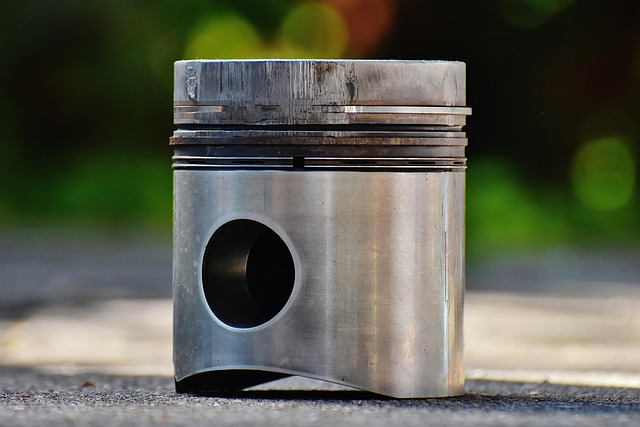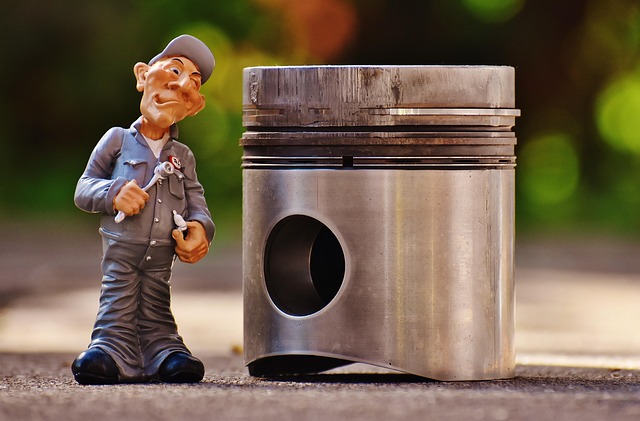Looking to register your car in California? This guide breaks down the process step-by-step, from understanding key requirements to securing your license plate. We’ll walk you through gathering essential documents, visiting a DMV office or using the online system, completing the mandatory VIN verification, and paying registration fees. By following these clear instructions, you’ll be cruising down California’s roads in no time with all your paperwork in order. Don’t forget to utilize our provided dmv vin verifier resources for a seamless experience.
- Understand the Requirements for Car Registration in California
- Gather Necessary Documents for Car Registration
- Visit a California DMV Office or Use the Online System
- Complete the Vehicle Identification Number (VIN) Verification Process
- Pay the Registration Fees and Receive Your License Plate
Understand the Requirements for Car Registration in California

Before you begin the registration process in California, it’s crucial to understand what is required. The Department of Motor Vehicles (DMV) demands several key documents and inspections for any vehicle entering their system. One critical step involves utilizing a DMV VIN verifier, which checks the Vehicle Identification Number (VIN) to ensure the car’s history aligns with its claimed state. This process verifies ownership, accident records, and any outstanding recalls or legal issues.
Additionally, consider using a mobile VIN verifier or undergoing a mobile vin inspection for added convenience. These services allow you to complete the verification step from the comfort of your home or even while you’re on the go, streamlining the registration experience and making it more accessible for California residents.
Gather Necessary Documents for Car Registration

Before you start the registration process, ensure you have all the required documents. The California Department of Motor Vehicles (DMV) requires a range of paperwork to verify your vehicle’s details and your identity. This includes the vehicle’s Certificate of Title, which you’ll receive when you purchase your car, and a valid driver’s license or state ID card. Additionally, you’ll need proof of insurance, which can be provided by your insurance company.
For a seamless registration experience, consider using a DMV-approved VIN verifier to conduct a vin inspection. This step is crucial as it ensures the vehicle’s identification number (VIN) is accurate and matches the data on file with the California DMV. A mobile vin verification service might be convenient if you’re short on time or prefer a more efficient process, allowing you to complete these formalities from the comfort of your home or office.
Visit a California DMV Office or Use the Online System

In California, registering your car involves either visiting a local DMV office or utilizing their online system, offering convenience and efficiency for residents. The first step in both methods is to ensure your vehicle’s eligibility for registration, which includes checking if it has a valid registration, insurance, and meeting all safety standards. One crucial aspect of the process is using a DMV VIN verifier to check the vehicle’s history, including its previous owners and any reported accidents or damages.
For those who prefer digital solutions, California’s DMV provides an online platform that allows users to submit their applications remotely. This system includes features like a mobile VIN verifier, enabling you to verify your vehicle’s information quickly and securely from the comfort of your home. Alternatively, visiting a physical DMV office is still an option, where you can complete paperwork and undergo a vin inspection in person.
Complete the Vehicle Identification Number (VIN) Verification Process

To register your car in California, completing the Vehicle Identification Number (VIN) Verification Process is a crucial step. This involves checking the VIN of your vehicle against records held by the Department of Motor Vehicles (DMV). You can do this through various methods, including submitting the form to the DMV or utilizing a mobile vin verification service for added convenience. A mobile vin inspection ensures you have all the necessary information readily available without having to visit a DMV office.
The process typically requires you to provide details from your vehicle’s registration and proof of insurance. After verifying the VIN, the DMV will determine if your car meets the state’s safety and emission standards. If everything is in order, they’ll issue a registration certificate, allowing you to legally operate your vehicle on California roads. Remember, accurate record-keeping during this process is essential for smooth car registration.
Pay the Registration Fees and Receive Your License Plate

After completing your vehicle’s registration application at the DMV or online, the next step is to pay the required fees. These fees cover the cost of registering your car and issuing license plates. The amount due will depend on various factors, such as the type of vehicle and its age. Once you’ve settled the payment, a crucial component of the process begins – receiving your unique license plate.
This involves obtaining a set of official plates that display your vehicle’s identifying information, including its VIN (Vehicle Identification Number). Some residents opt for a mobile vin inspection or verifier service to streamline this part, ensuring their vehicle’s details are accurately represented on the license plate. The DMV’s vin verifier plays a vital role in this, as it confirms the vehicle’s authenticity and history before finalizing the registration.
Registering a car in California is a straightforward process, ensuring your vehicle is safe for road use. By understanding the requirements, gathering essential documents, and completing steps like VIN verification through a DMV vin verifier, you can efficiently secure your car’s registration. Whether visiting a local DMV office or using the online system, this guide ensures you’re prepared to navigate California’s car registration process smoothly.
